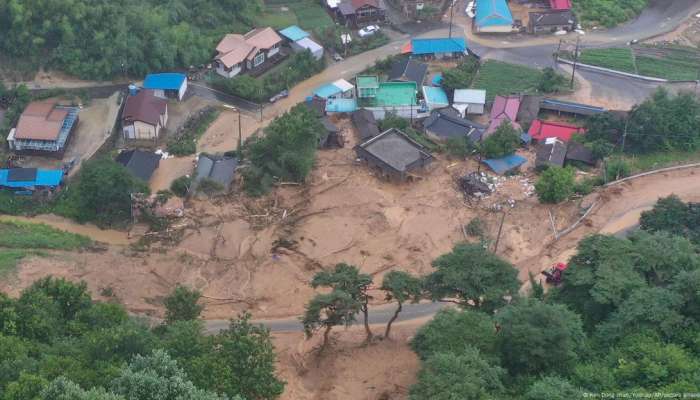
Relentless rain in South Korea has left at least 14 dead and 12 others missing, authorities said Sunday.
An Interior and Safety Ministry report said southern regions received around 24-31 inches (600-800 millimeters) of rain since Wednesday. What do we know about impacted regions?
The rural town of Sancheong in the south of the country recorded eight deaths after heavy downpours caused landslides. Six or seven others were still missing in the region, after flash floods destroyed homes in the area.
On Sunday, in Gapyeong, a town northeast of Seoul, one person was killed after their house collapsed and another person was found dead after being swept by a swollen stream in the town. Some others were still unaccounted for.
But the dayslong deluge of rain also finally subsided Sunday, with rain having stopped in most of the country. Heavy rain alerts have been subsequently lifted throughout the country, ministry officials said.
When did rains begin?
Heavy rainfall began this Wednesday, steadily forcing more people to evacuate their homes, with 3,840 having evacuated as of Sunday, according to the Associated Press news agency. Flights were also canceled.
Earlier this week, three people were found dead in a submerged car, and a person was also killed when their car was buried by soil and concrete after a retaining wall of an overpass collapsed in Osan, just south of Seoul, during heavy rain.
South Korea usually sees monsoon rains in July. However, this year the country has seen more intense rains. Official weather data this year showed that the country saw some of the heaviest rainfall per hour on record.
Scientists say climate change is responsible for making such weather events both more frequent and more extreme. In 2022, heavy rains and flooding in South Korea left at least 11 people dead.